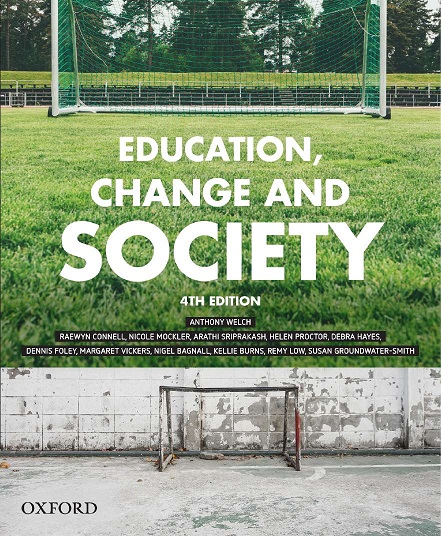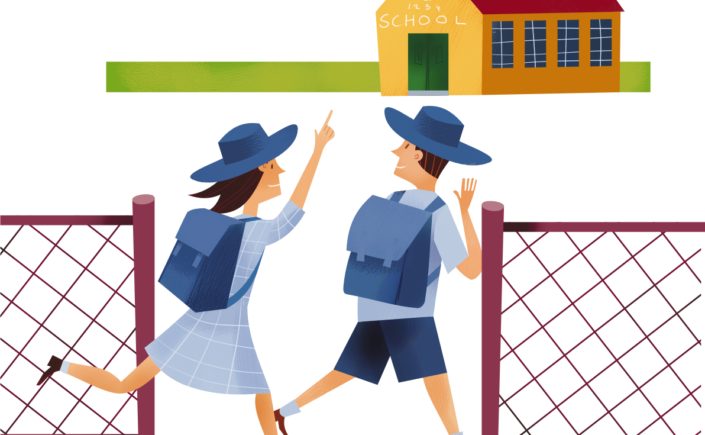By Anthony Welch
There has been much interest in the recent Schools that Excel series in The Age. The series aimed to reveal to readers which Victorian schools had improved the most in the past decade, according to factors including the number of students who progressed to university, or the median VCE scores.
All of this begs the question, what does a ‘good school’ look like? Three schools have revealed much to me about the complexity of determining what makes a school ‘good’.
Once upon a time, I went to Balwyn High School. Then, it was just an ordinary suburban high school, with students from wealthy North Balwyn, as well as from more modestly middle-class Balwyn, and also from pockets of real poverty within the suburb. Almost all students walked or rode their bikes to school. There were sometimes fights in the playground, and there were also some excellent teachers, some excellent athletes (where are you now, Noel Chong?), and a number of students who achieved excellent Year 12 results. Most results were moderate, including mine.
Two years ago marked a number of decades since our Balwyn High class graduated Year 12. So I checked the school’s website. Its Lion newsletter proudly boasted that ‘2018 saw 55 amazing students achieve an ATAR score of 97 and above, placing them in the top three per cent of the state’. Their achievements were to be added to the school’s Honour Roll. I happened to mention this to a close friend, who expressed surprised I didn’t know its changed reputation. He told me that numbers of families – at least, those who had the money – were buying houses within the area, to ensure their children could enrol. Balwyn now is not the Balwyn I knew when growing up; partly due to the school’s success in the high-stake competition between schools for the best students.
A few years later, my first job as a newly-minted teacher was also in Melbourne, but Glenroy Tech was very different. In the newly developing Northwest of Melbourne, much of the suburb was formed from relocating some of Melbourne’s poorest, after the closure of ‘Camp Pell’, which had housed many of Melbourne’s poor after the war. Glenroy’s juvenile delinquency rate was among the highest in the state. The technical school system was for kids labelled ‘non-academic’; those who it was assumed were ‘good with their hands’. Perhaps for this reason, there was no Year 12.
Most of us were beginning teachers, committed to doing the best for Glenroy’s kids. Classes were huge, but there was much innovation, in an era when the curriculum was less constrained, and teachers did not have to teach to a test. PISA and NAPLAN were not even a gleam in bureaucratic eyes. One year, teachers in our innovative Maths department entered some of our students into a state-wide Maths games competition. Our ragged band of students, with torn school jumpers and school ties askew, won, competing against much better-resourced schools, public and private. But no-one moved to Glenroy as a result, hoping to enrol their children into Glenroy Tech.
I’m now based in Sydney. Both of my children attended the same school, one of the newer state selectives, of which NSW has more than any other state. One child excelled, the other barely passed the HSC. Like other such schools, Caringbah High is now highly selective, with parents from across the city competing for places. The school across the road had to re-invent itself as a sports high school, to stop its top talent being creamed off to Caringbah. Families engage in various strategies in order to secure a place. Some move into the area, others send their kids to the proliferating range of after-school tutoring classes that promise to get their pupils into top schools. The competition for places in such ‘good schools’ has spawned a new industry of books and software that promise to boost your child’s chances to secure entry.
Such ‘good schools’ now are under pressure to manage enrolments. A recent article in the Sydney Morning Herald, listed the tricks that some parents use to fool schools into accepting their kids. Some forged signatures on application forms, others used fake addresses. In one case, seven families used the same address in their applications. The situation in Melbourne is little different.
Last year I co-authored a book which listed the kinds of pressures this places on teachers at ‘good schools’, which included a tendency, and even requirement, to teach to the test, narrowing the curriculum to exclude material not to be tested, relentless pressure for improved test results, increased stress on students, parents, teachers and principals, less teacher autonomy.
Do ‘good schools’ make for good education? Of the three schools I’ve had most to do with, I know which one offered the best, most innovative teaching, although many might be surprised about which one it was.
Anthony Welch is Professor of Education, University of Sydney, and co-author of Education, Change and Society. (OUP, 2018)


Leave a Reply